A delegation of monastics from the Russian Orthodox Church visits Christian holy sites in Egypt
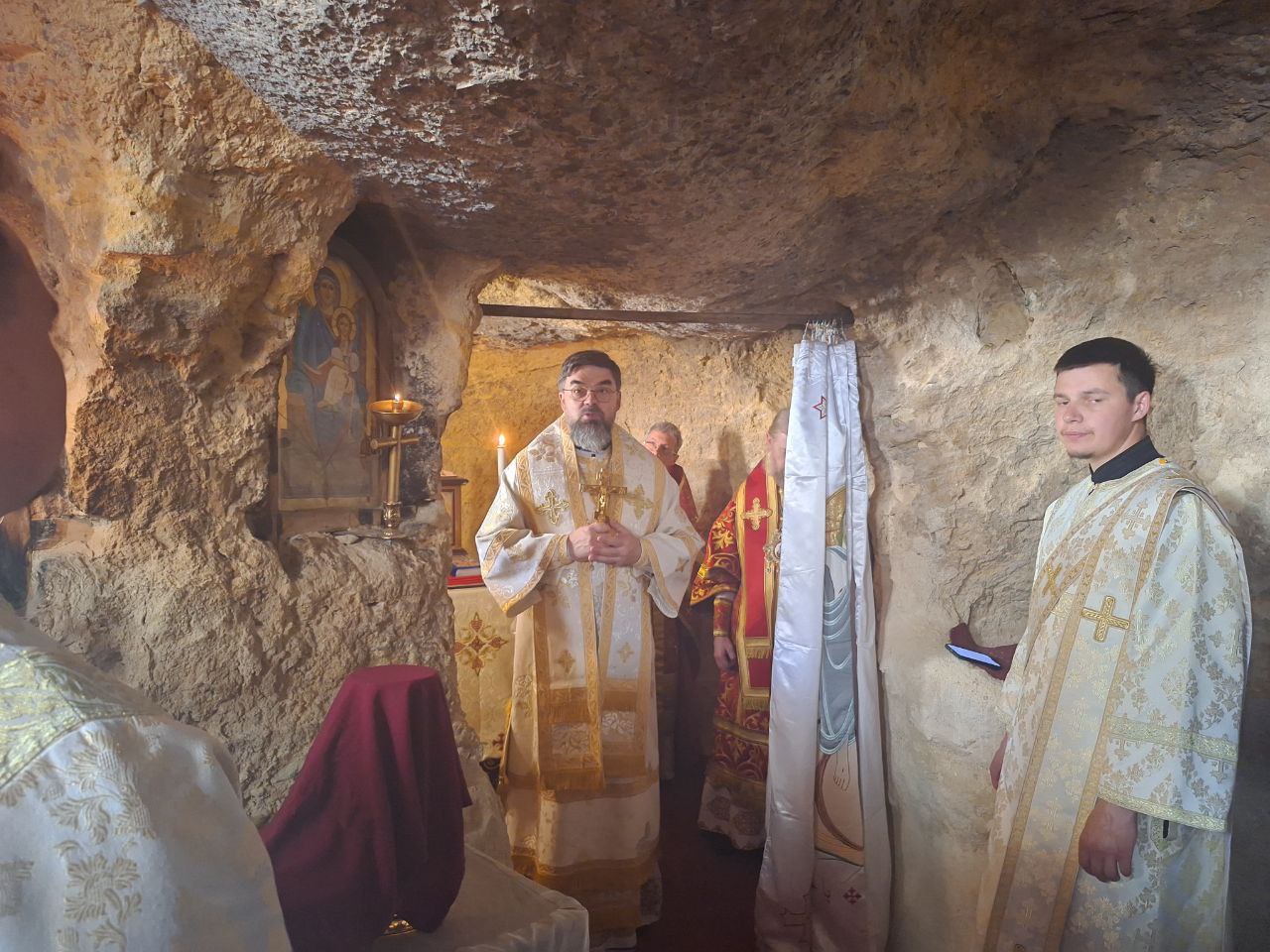
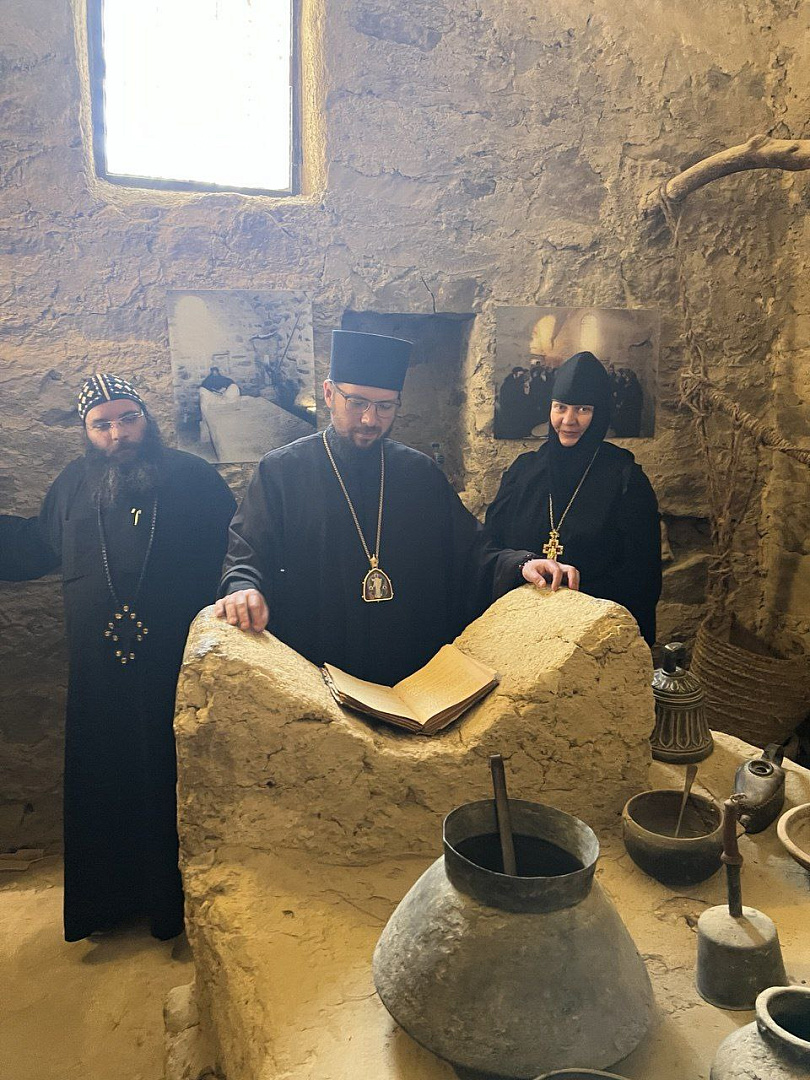
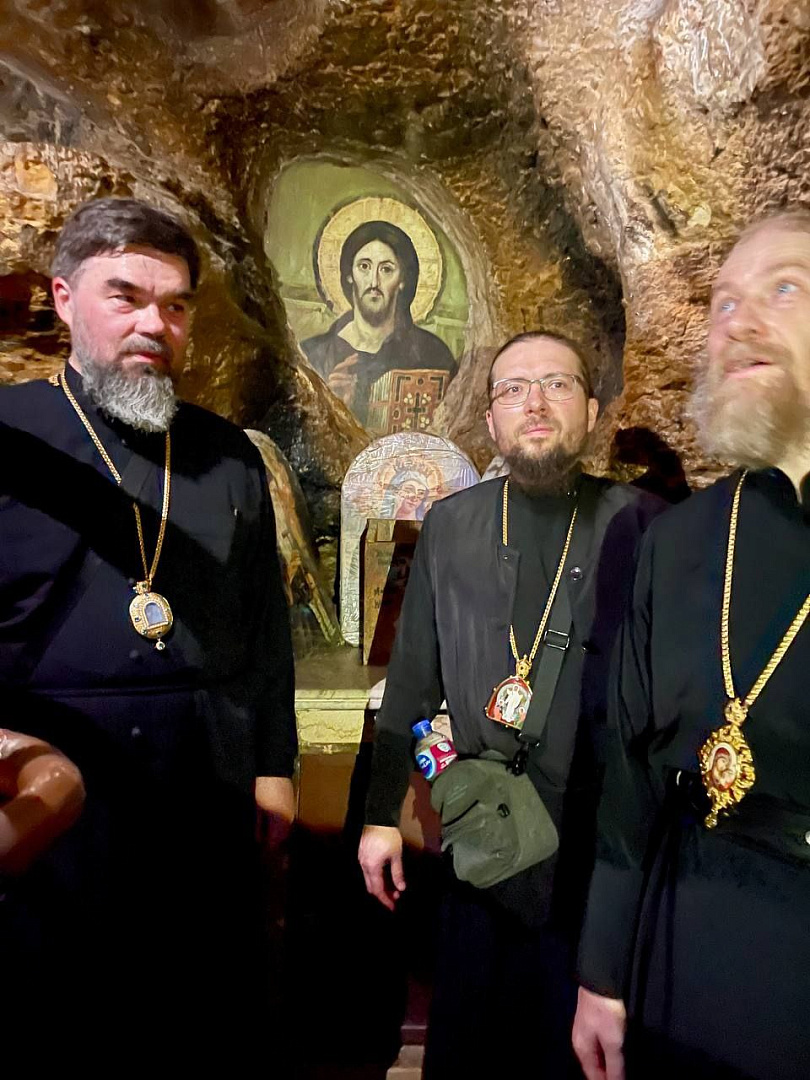
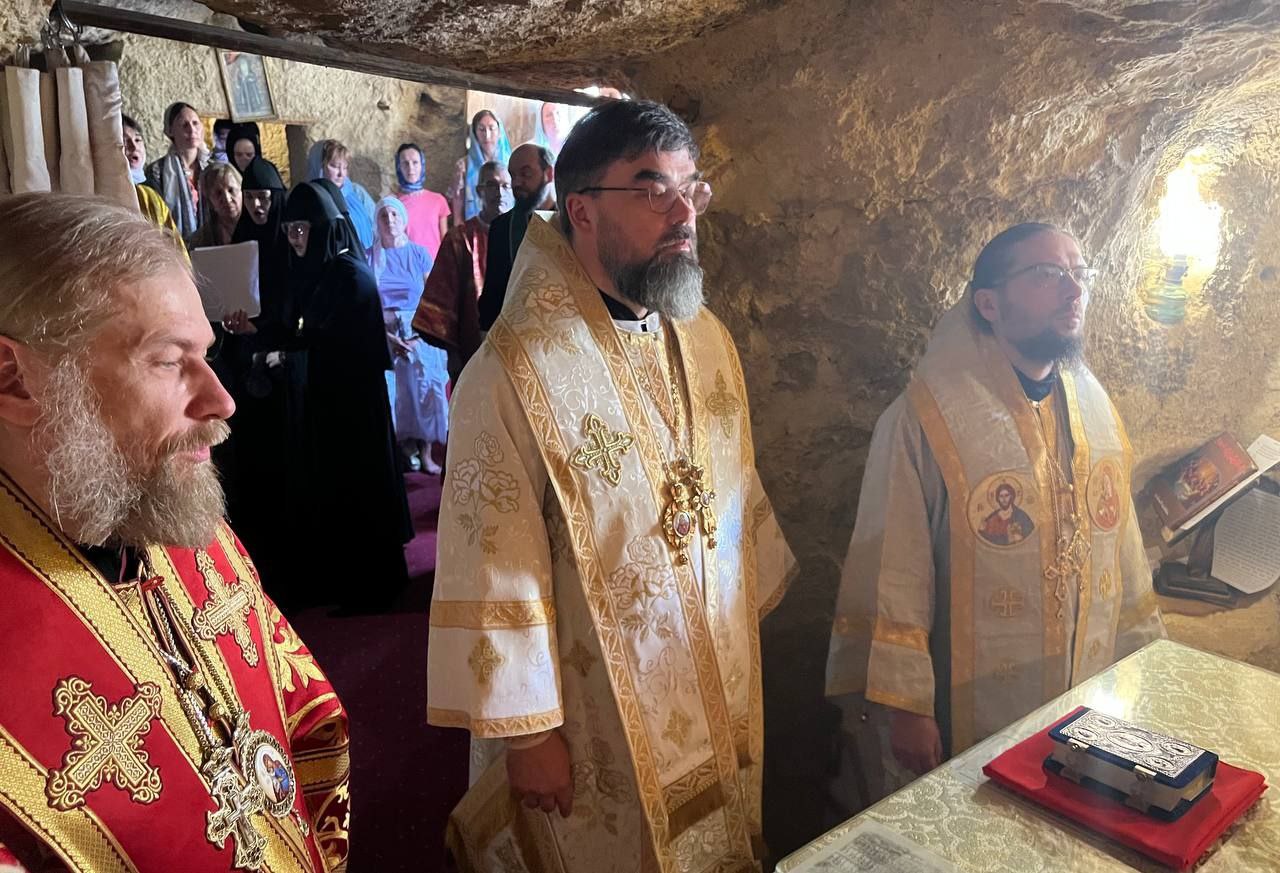
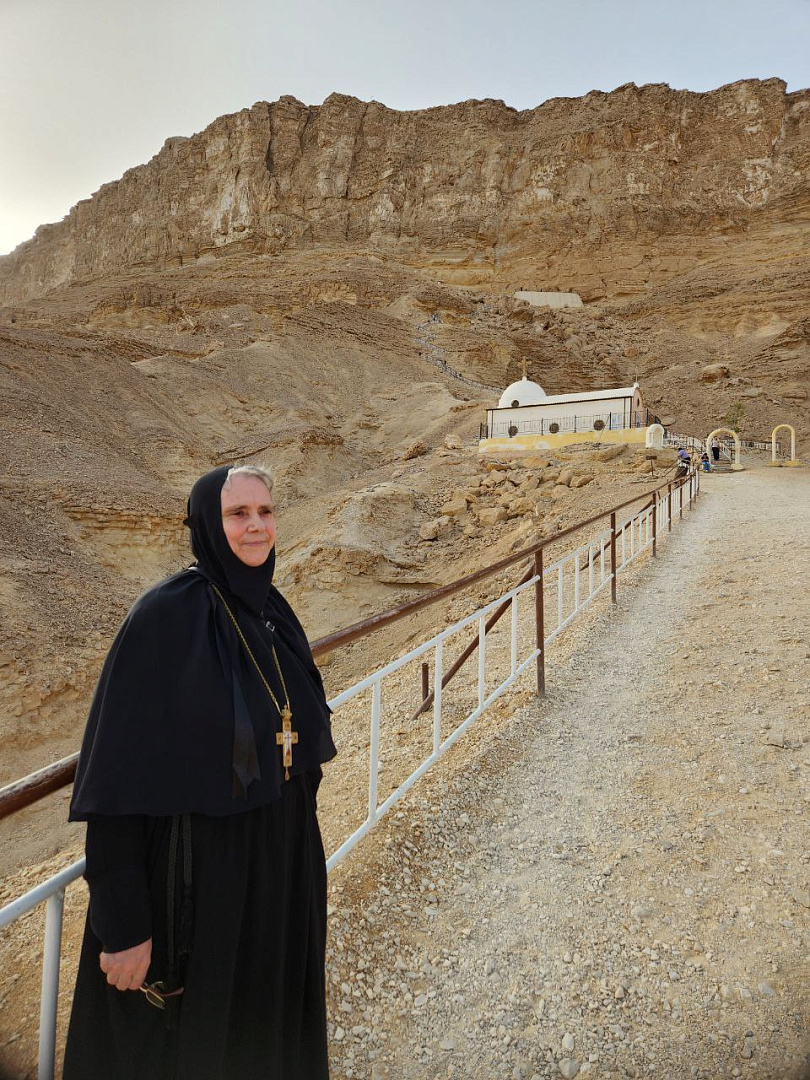
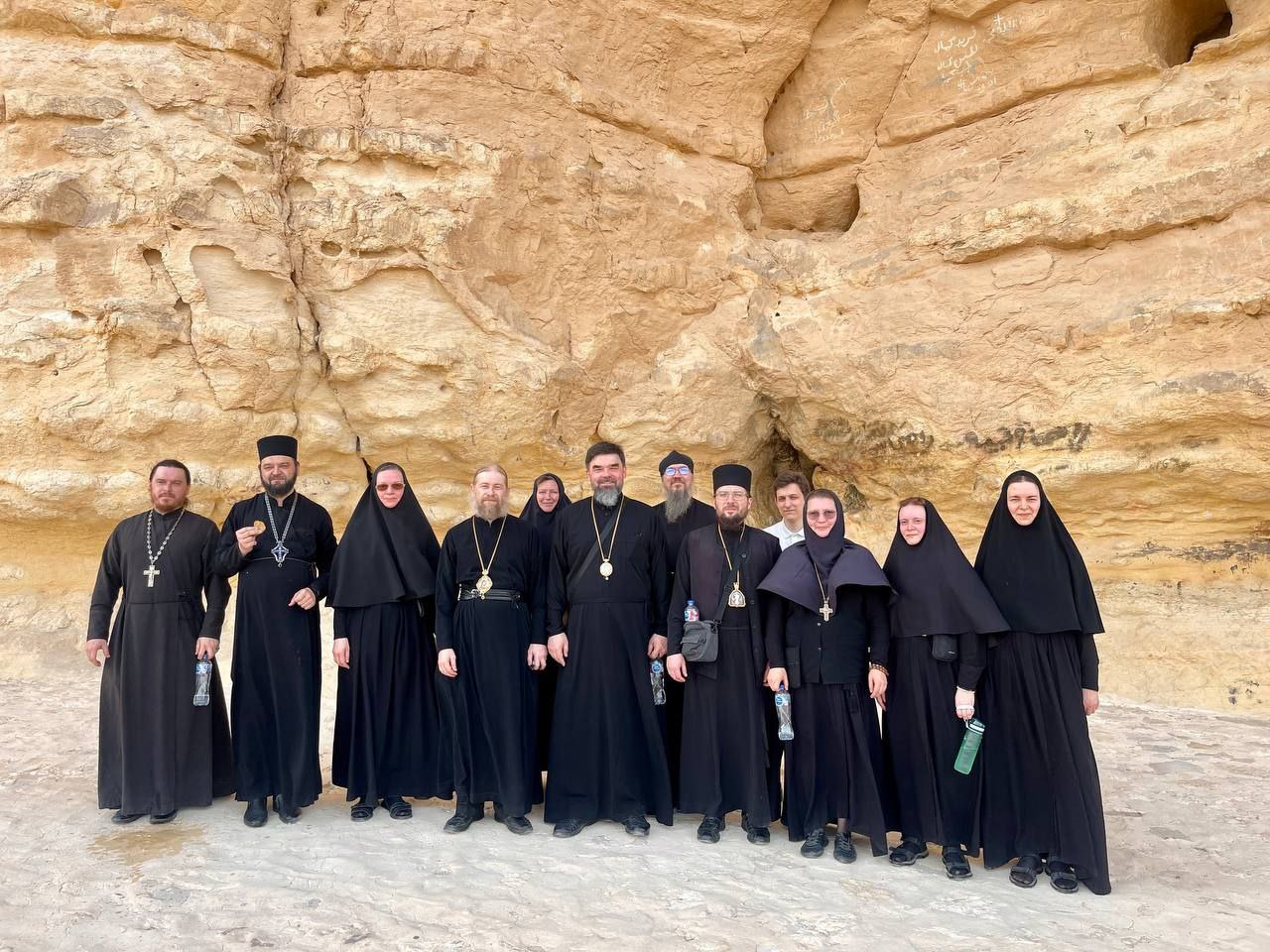
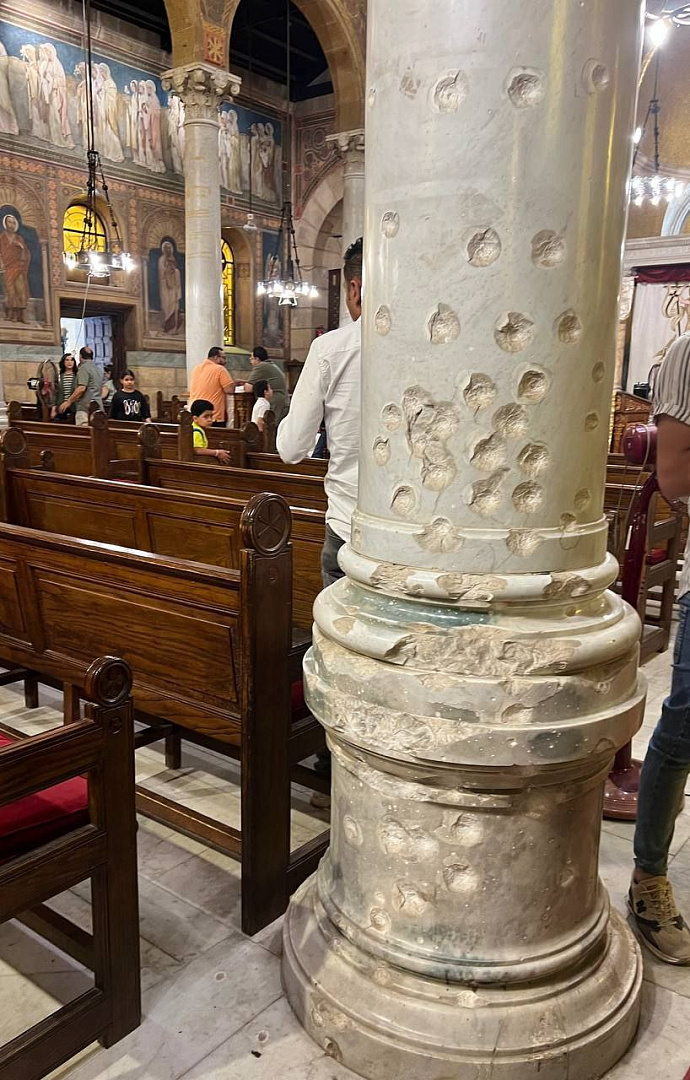
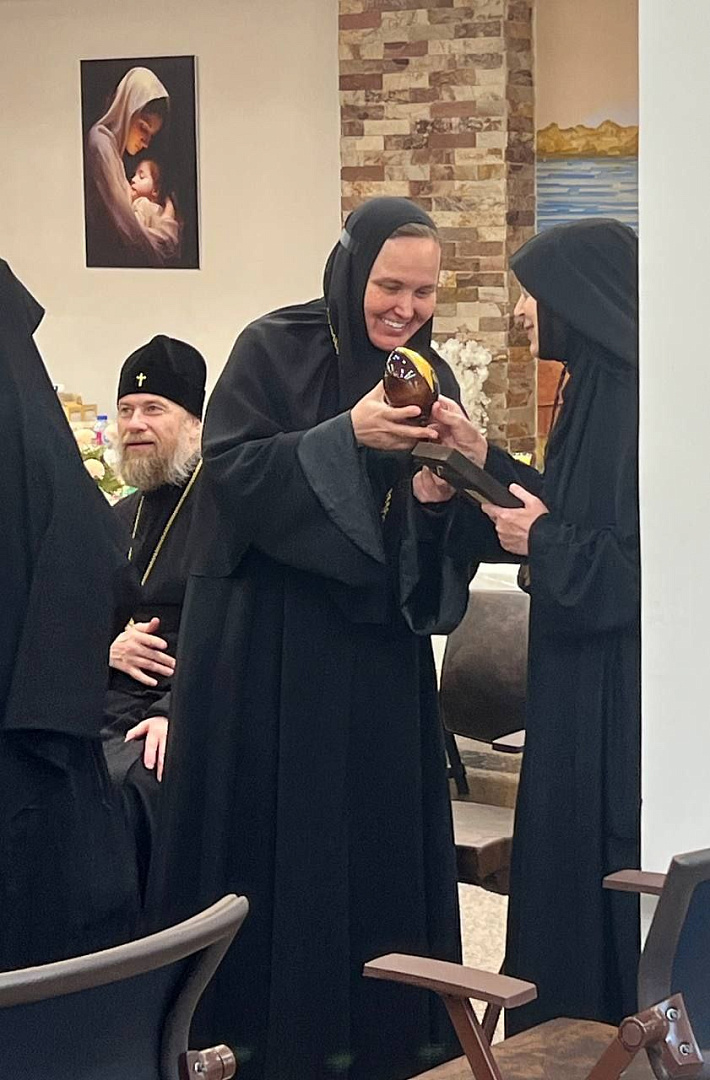
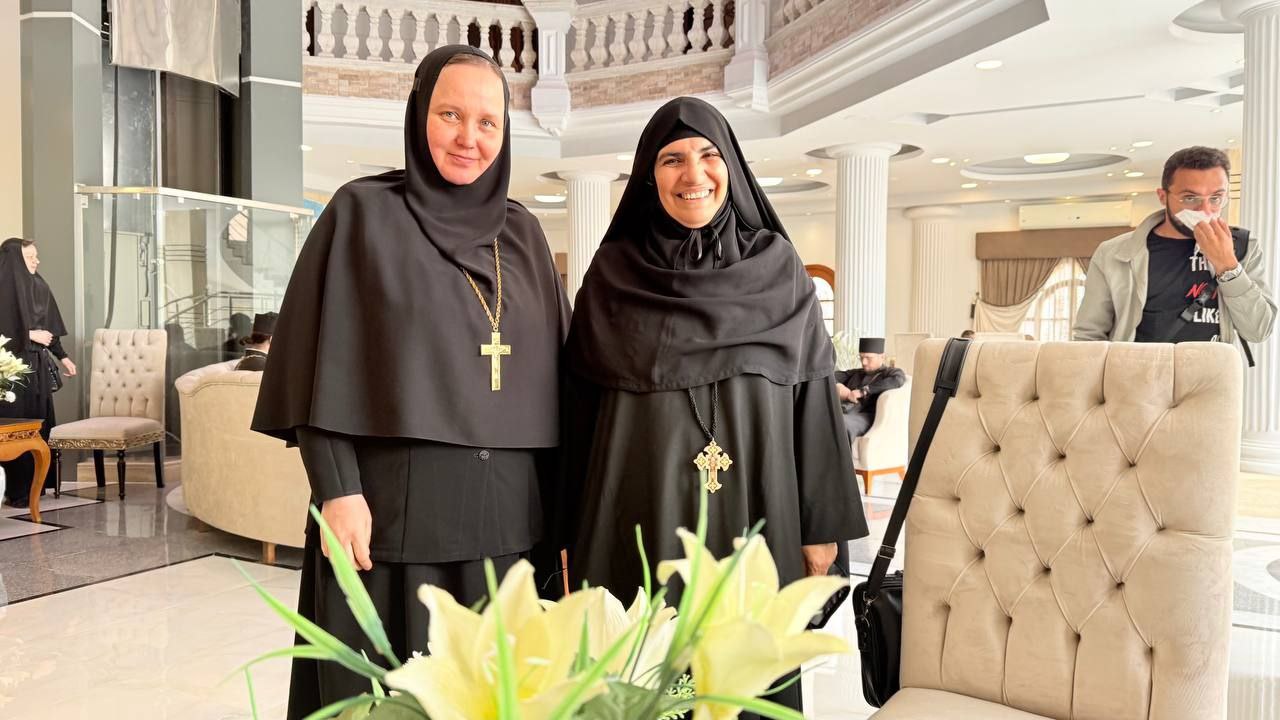
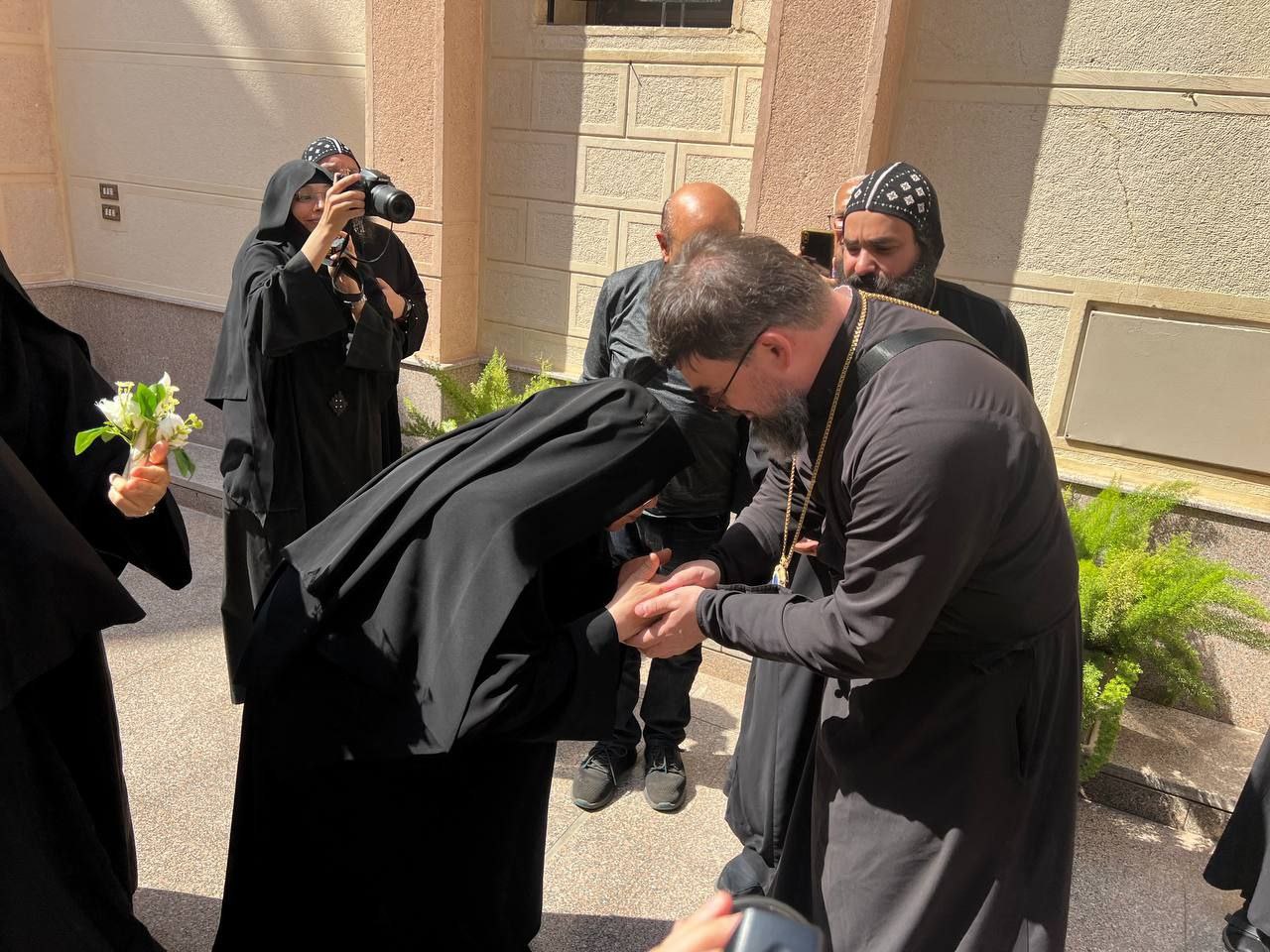
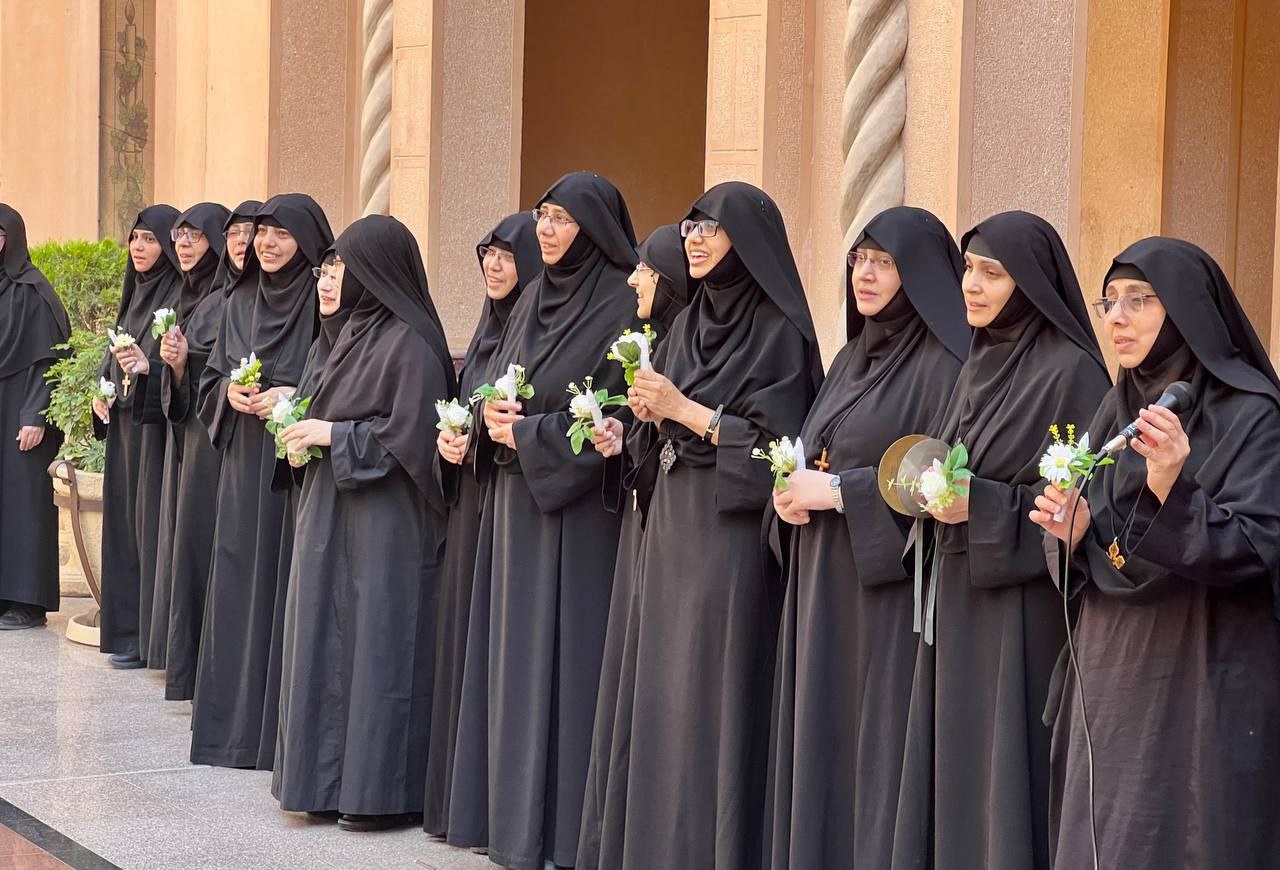
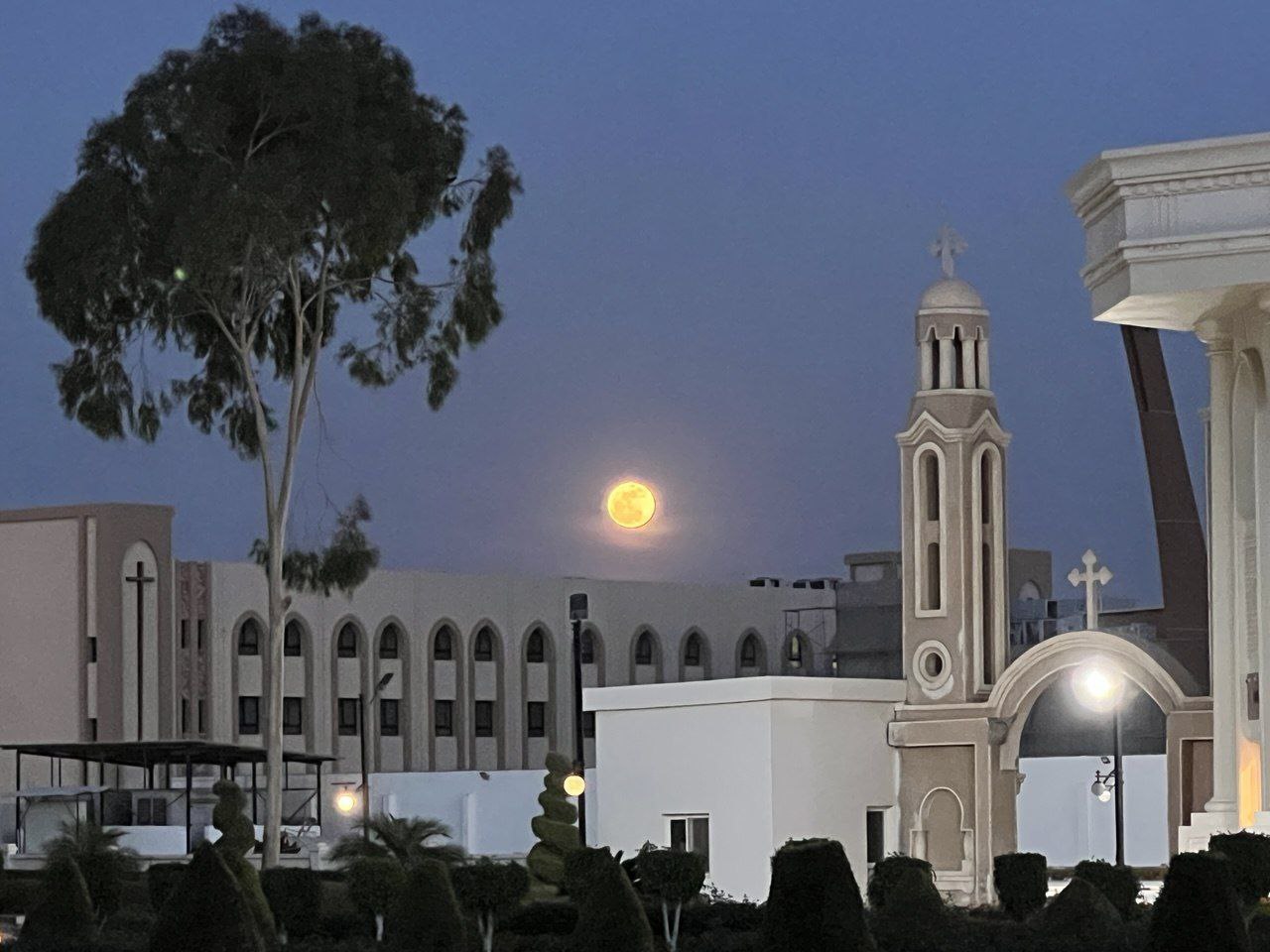
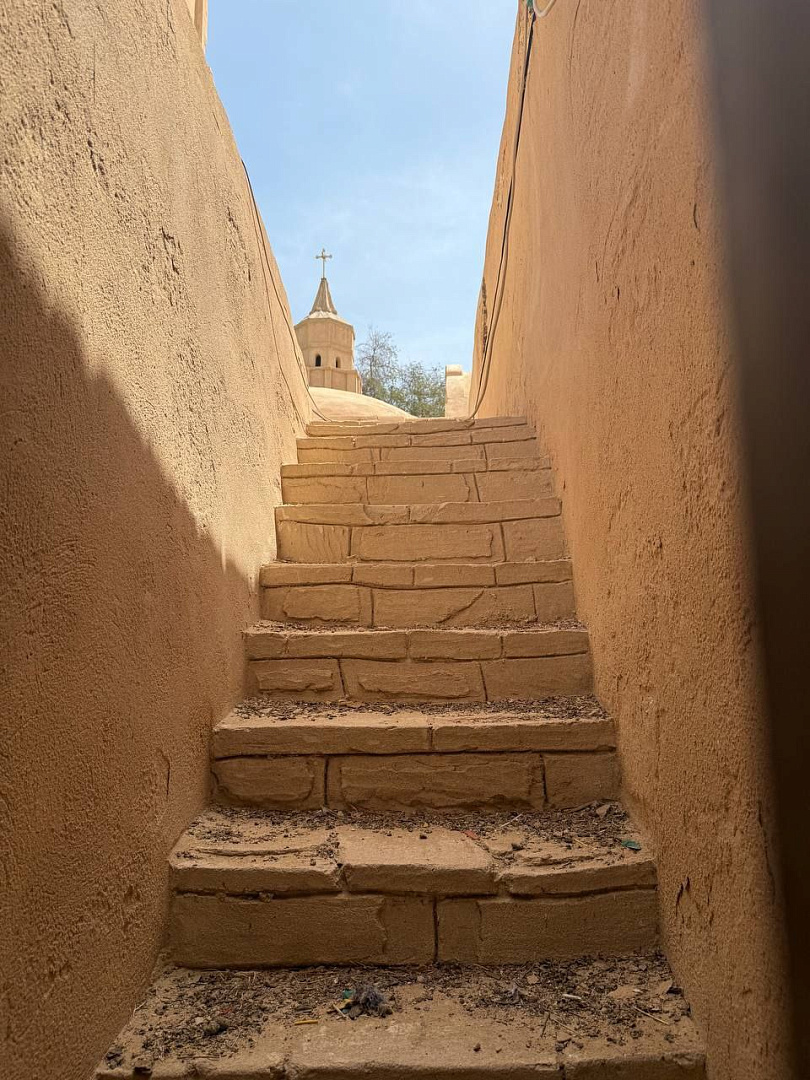
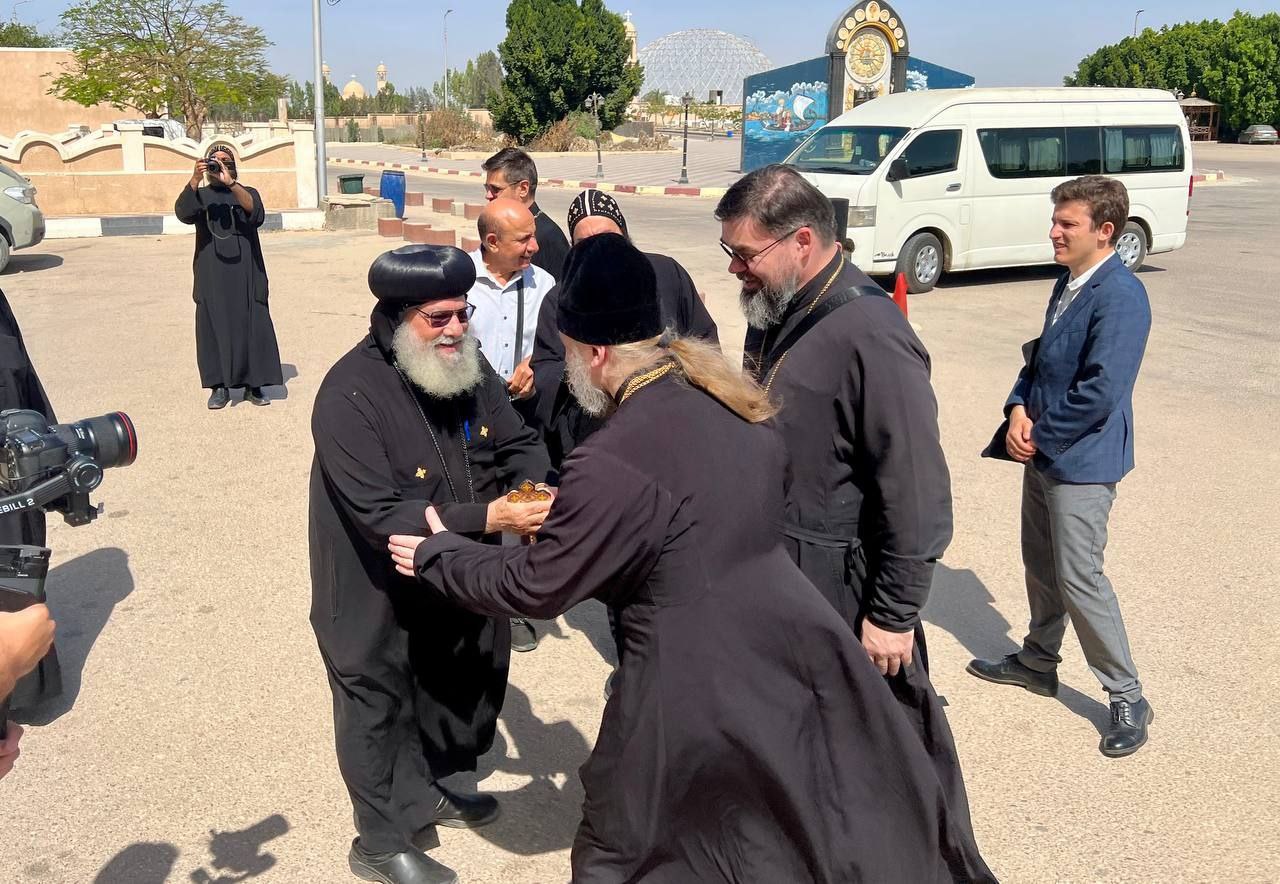
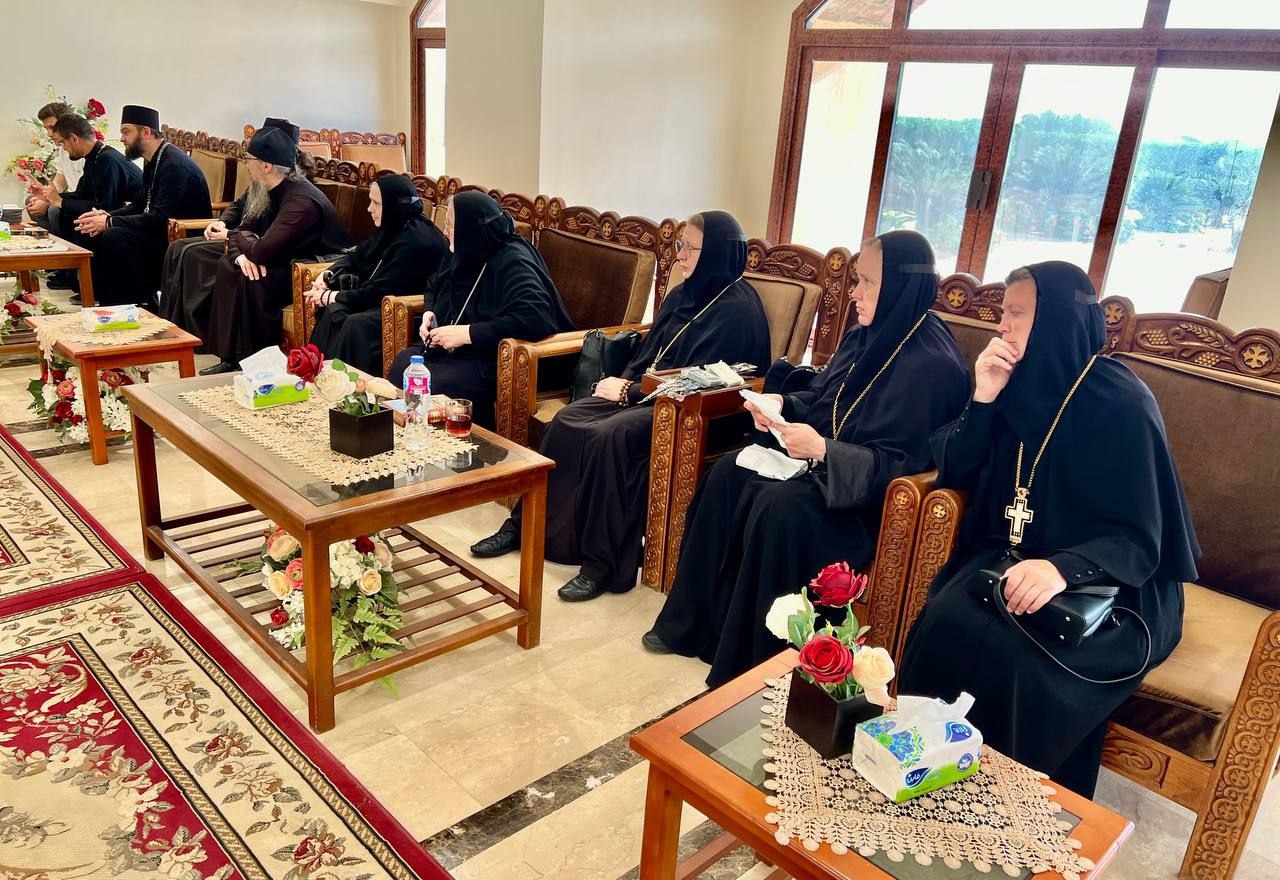
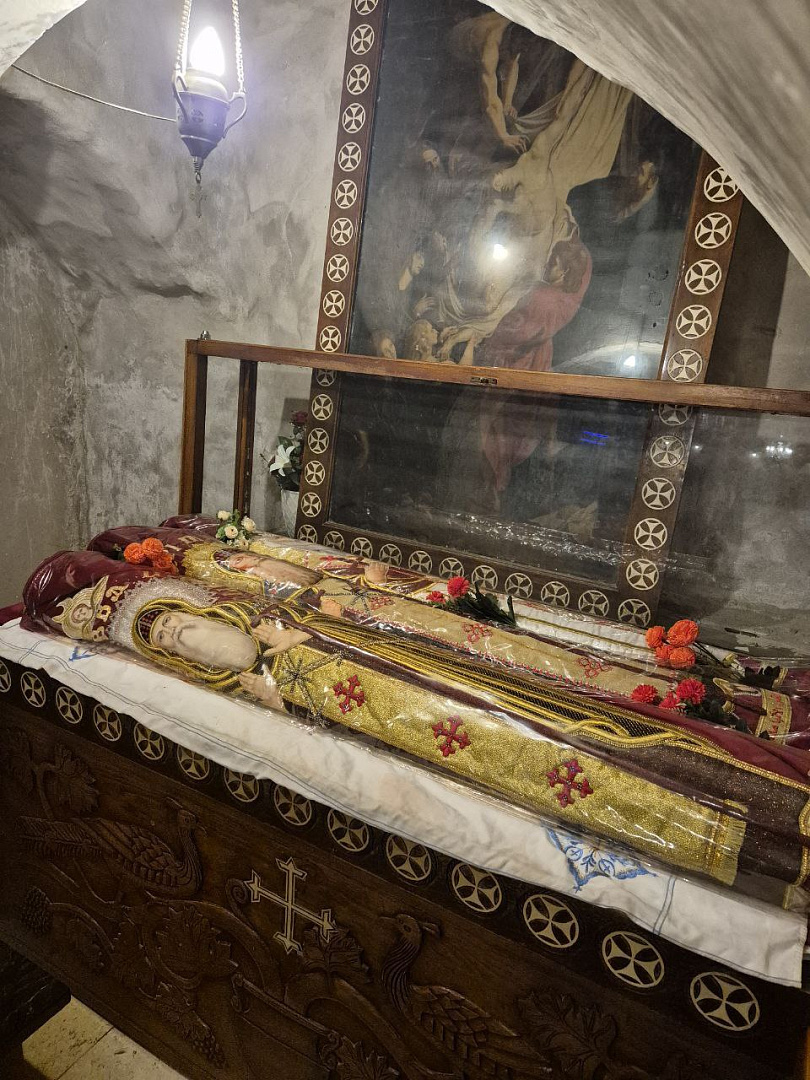
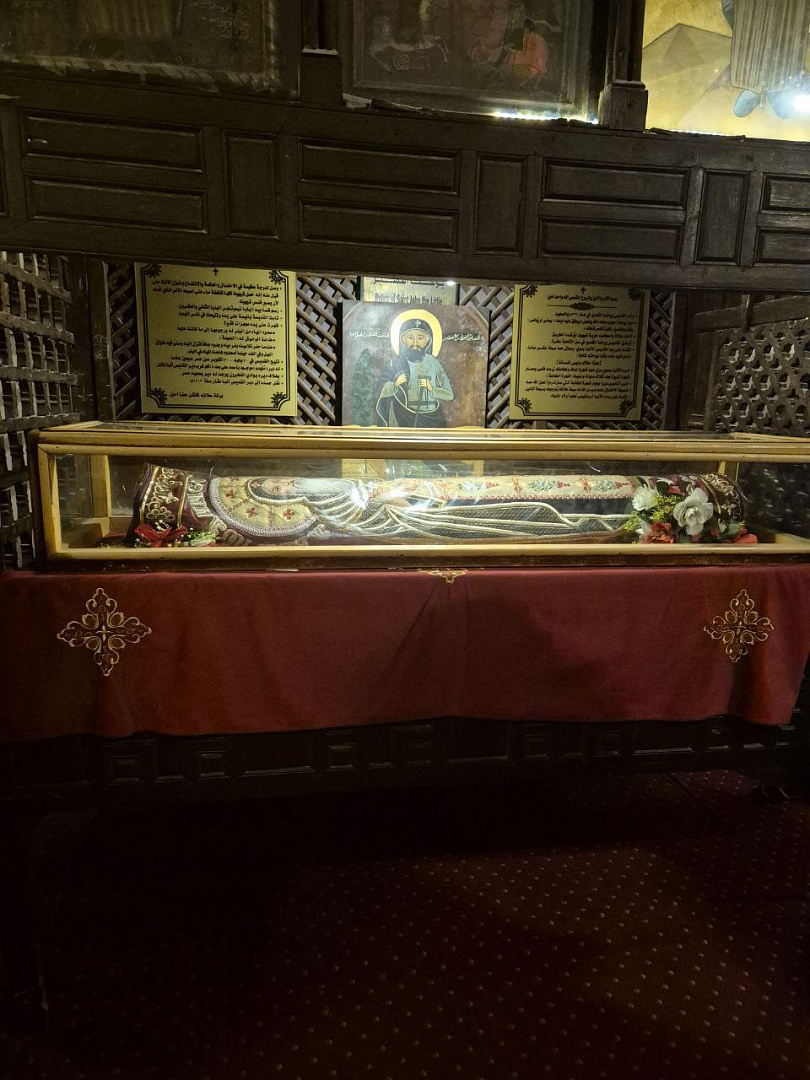
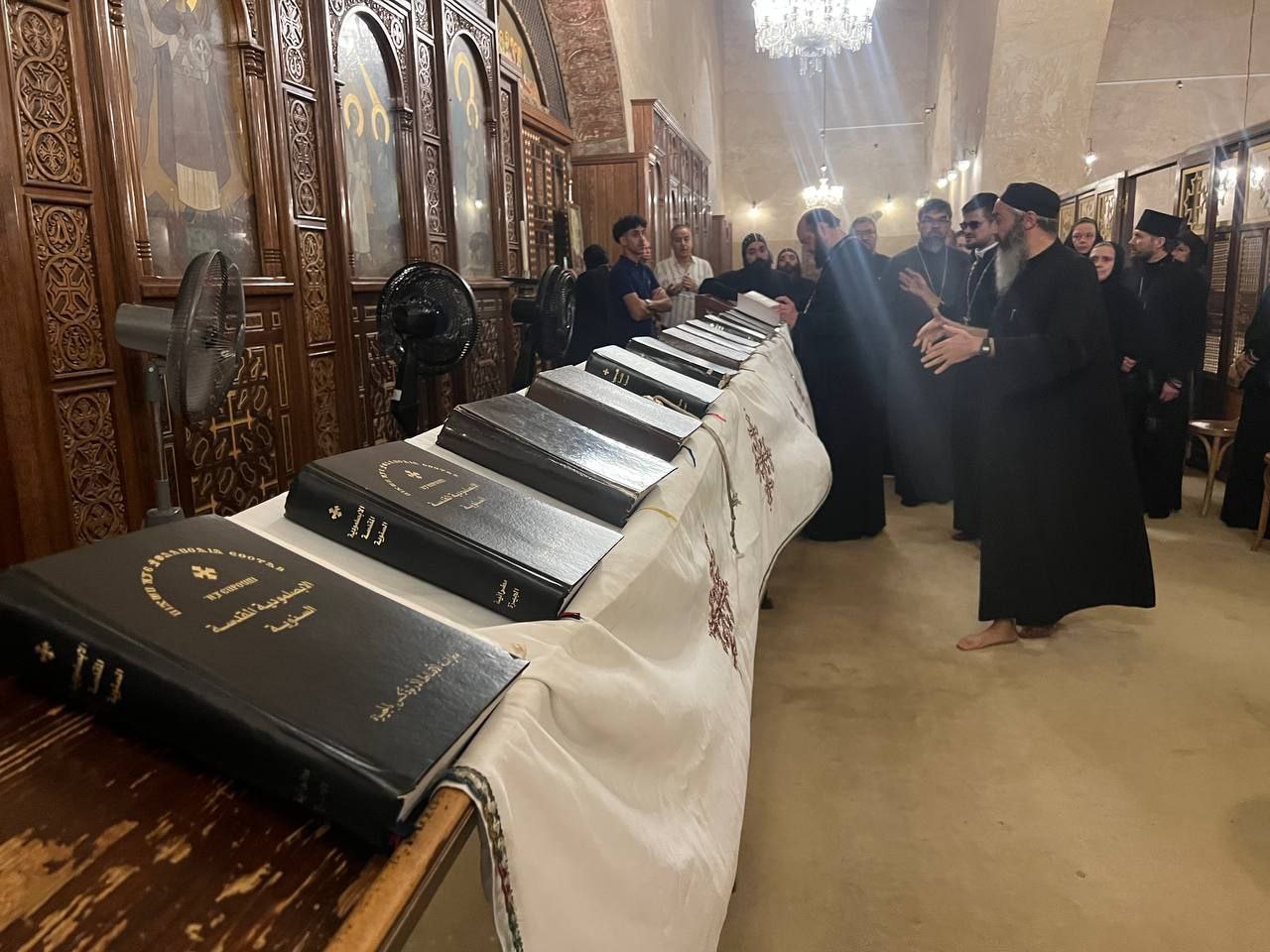

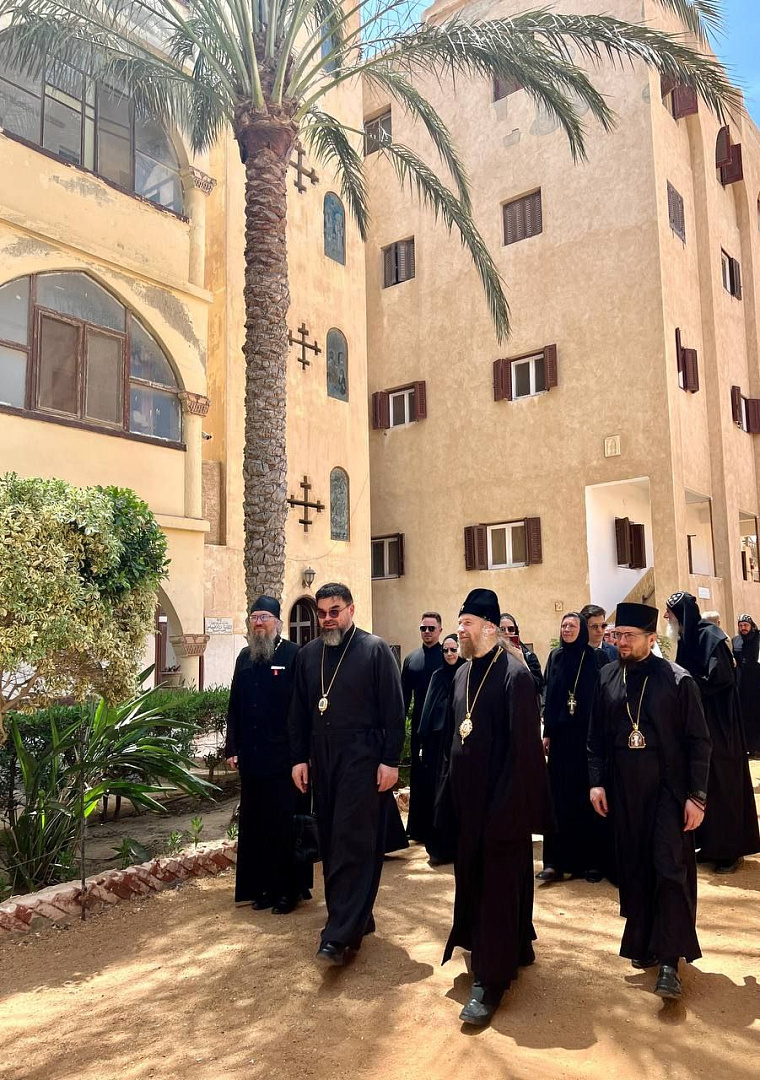
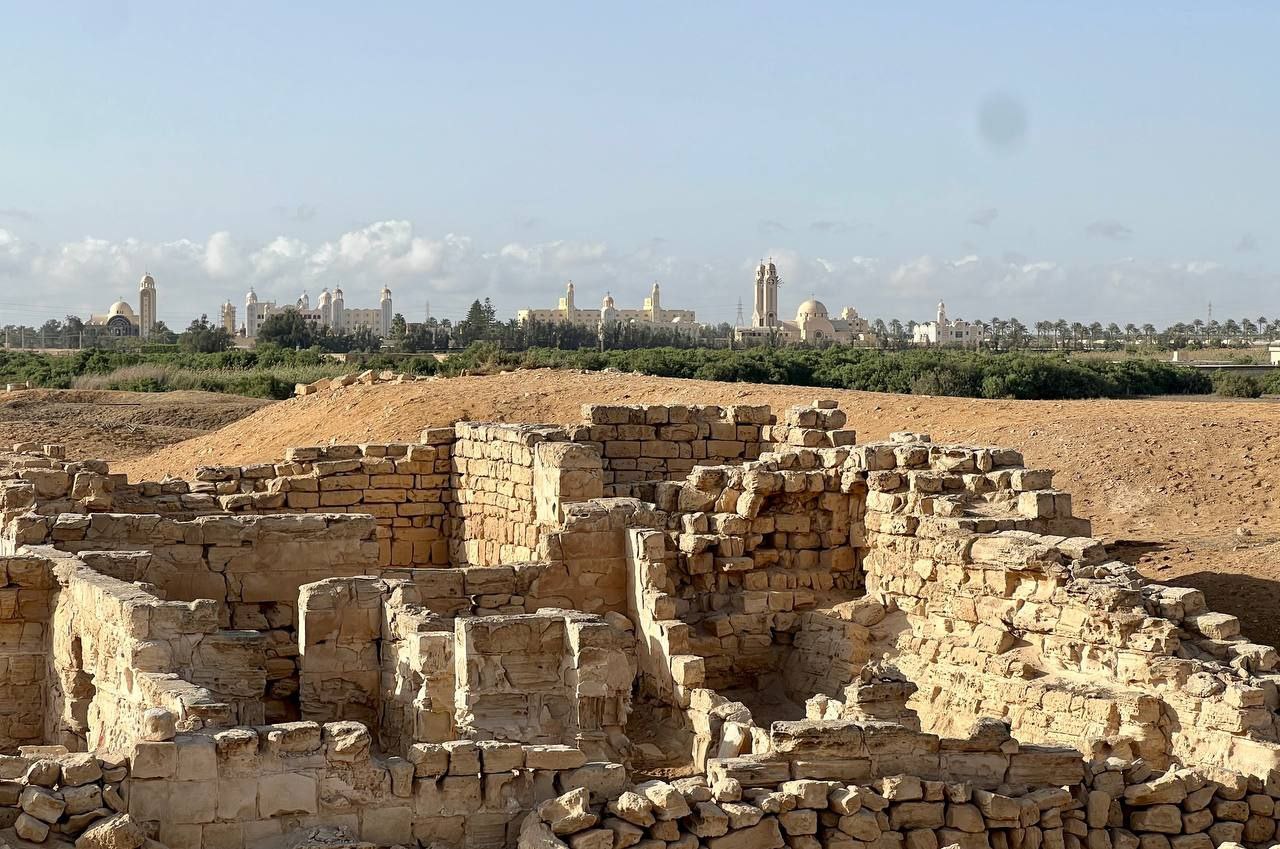

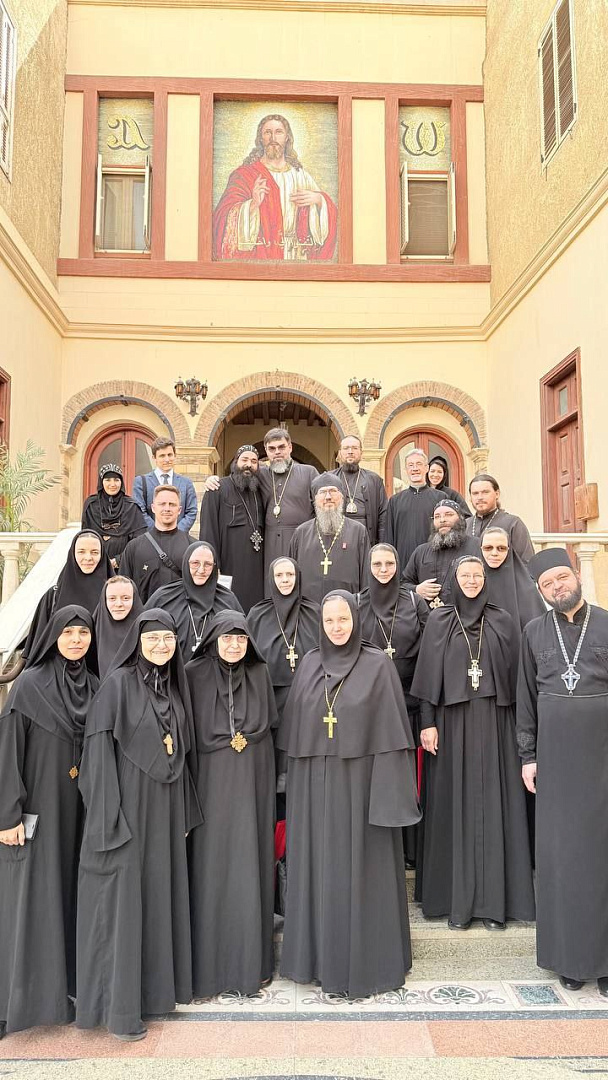
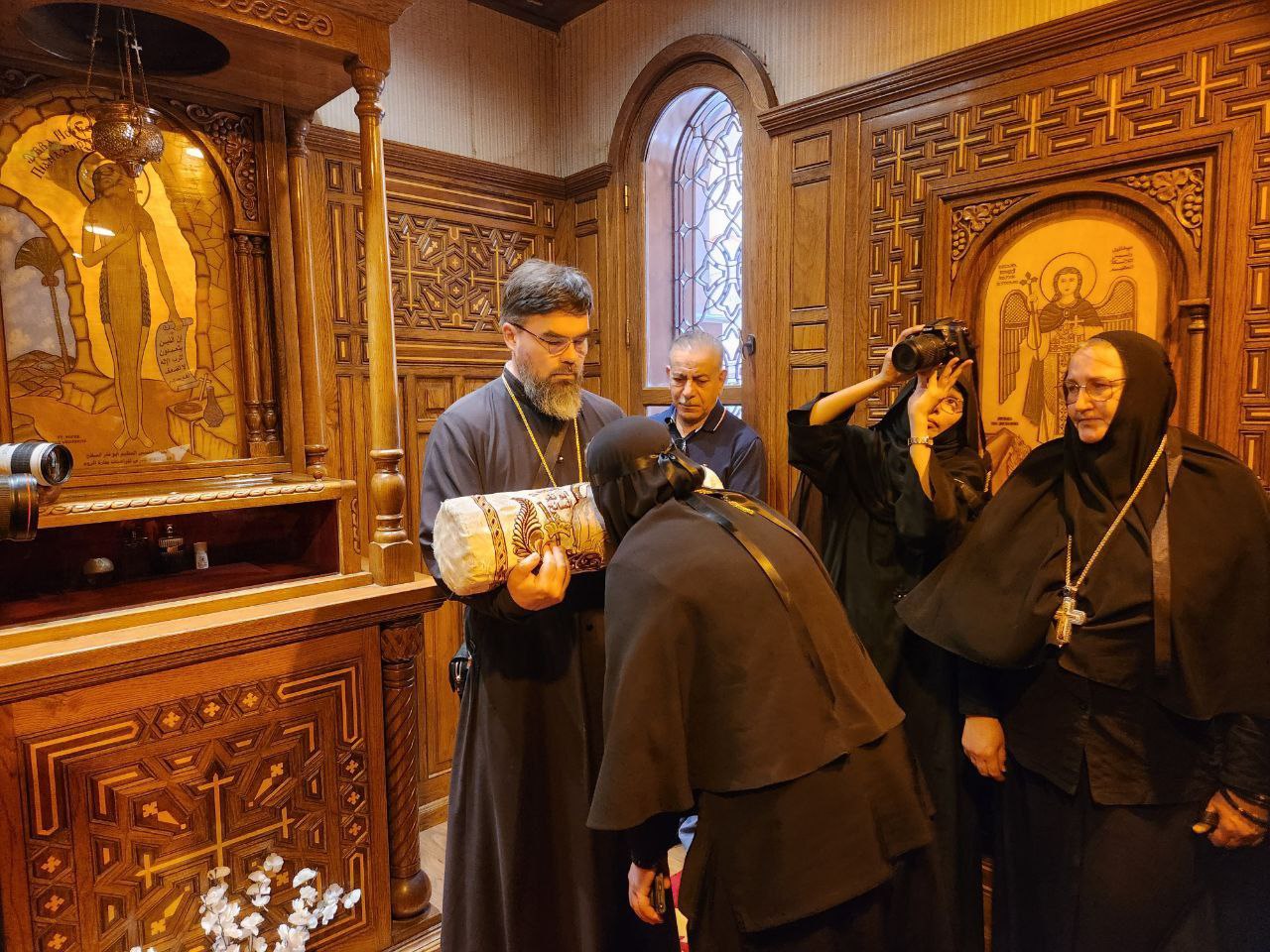
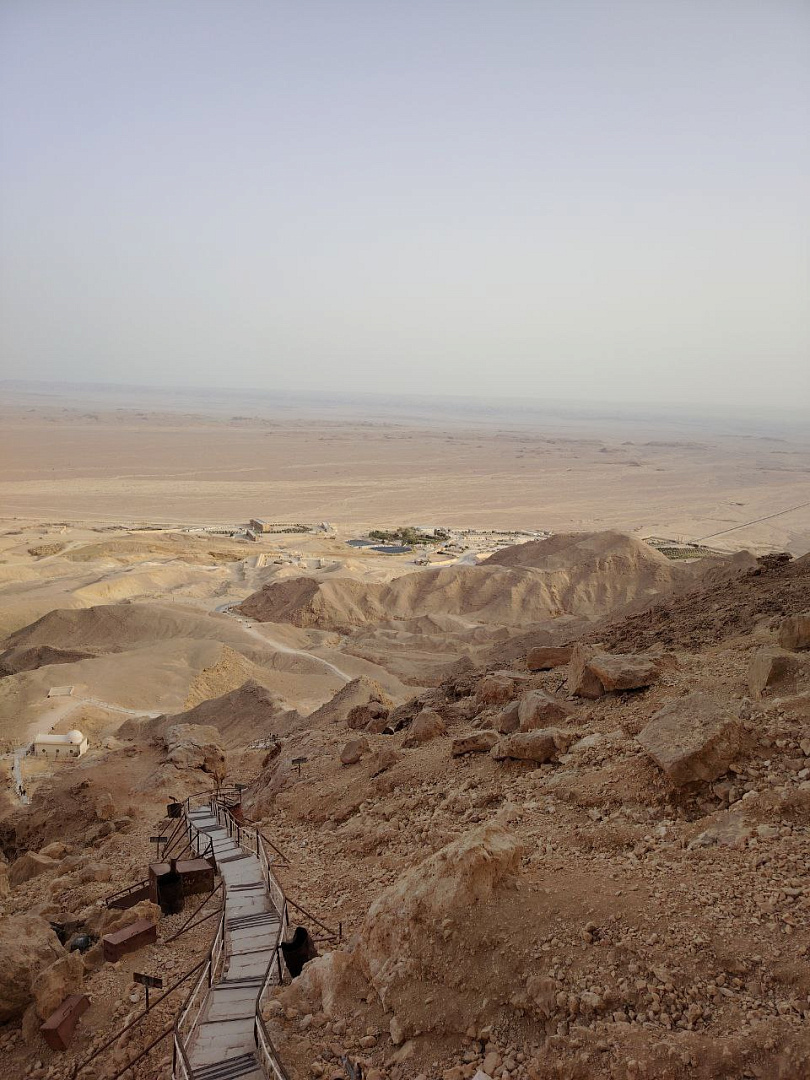

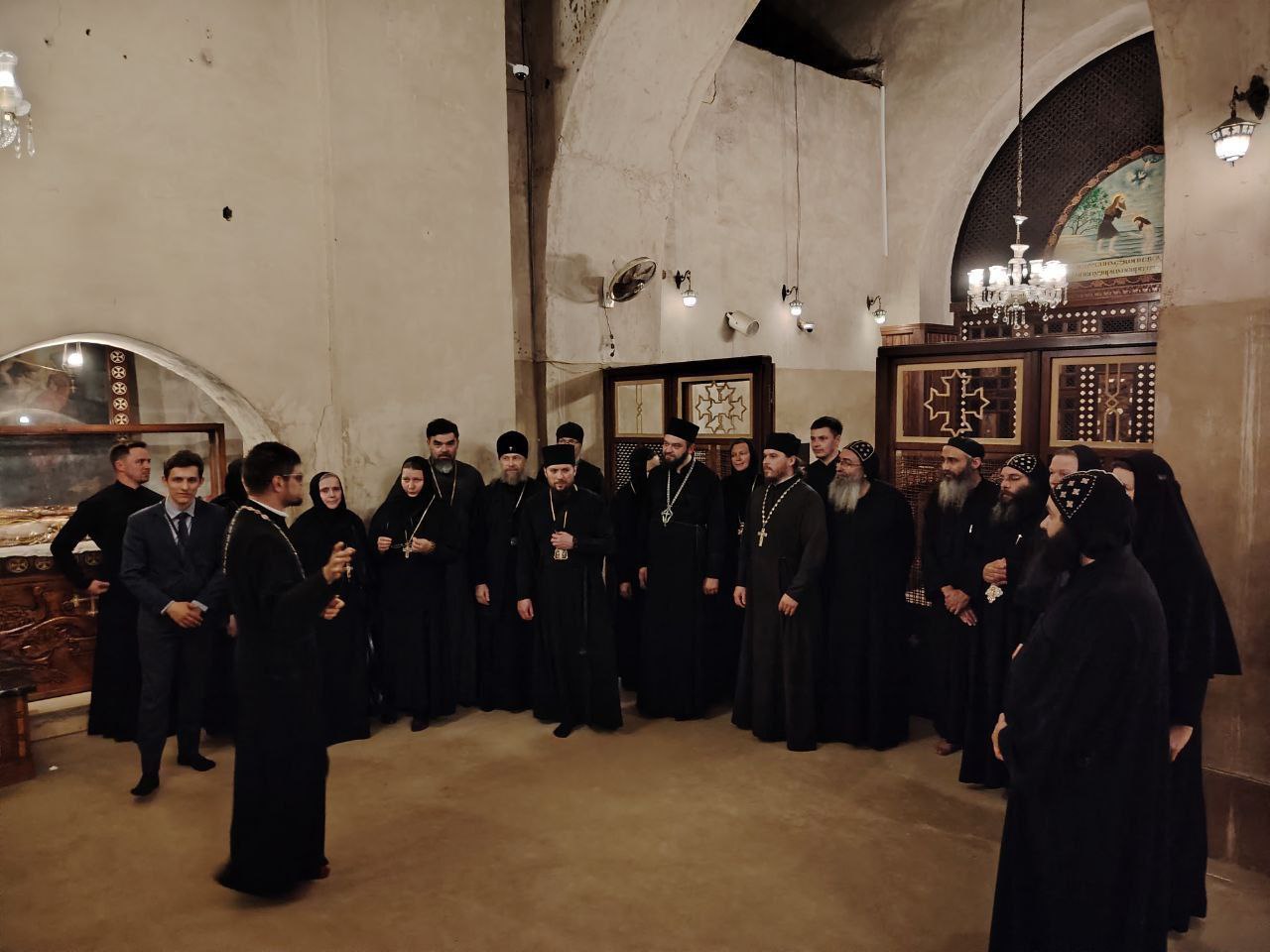

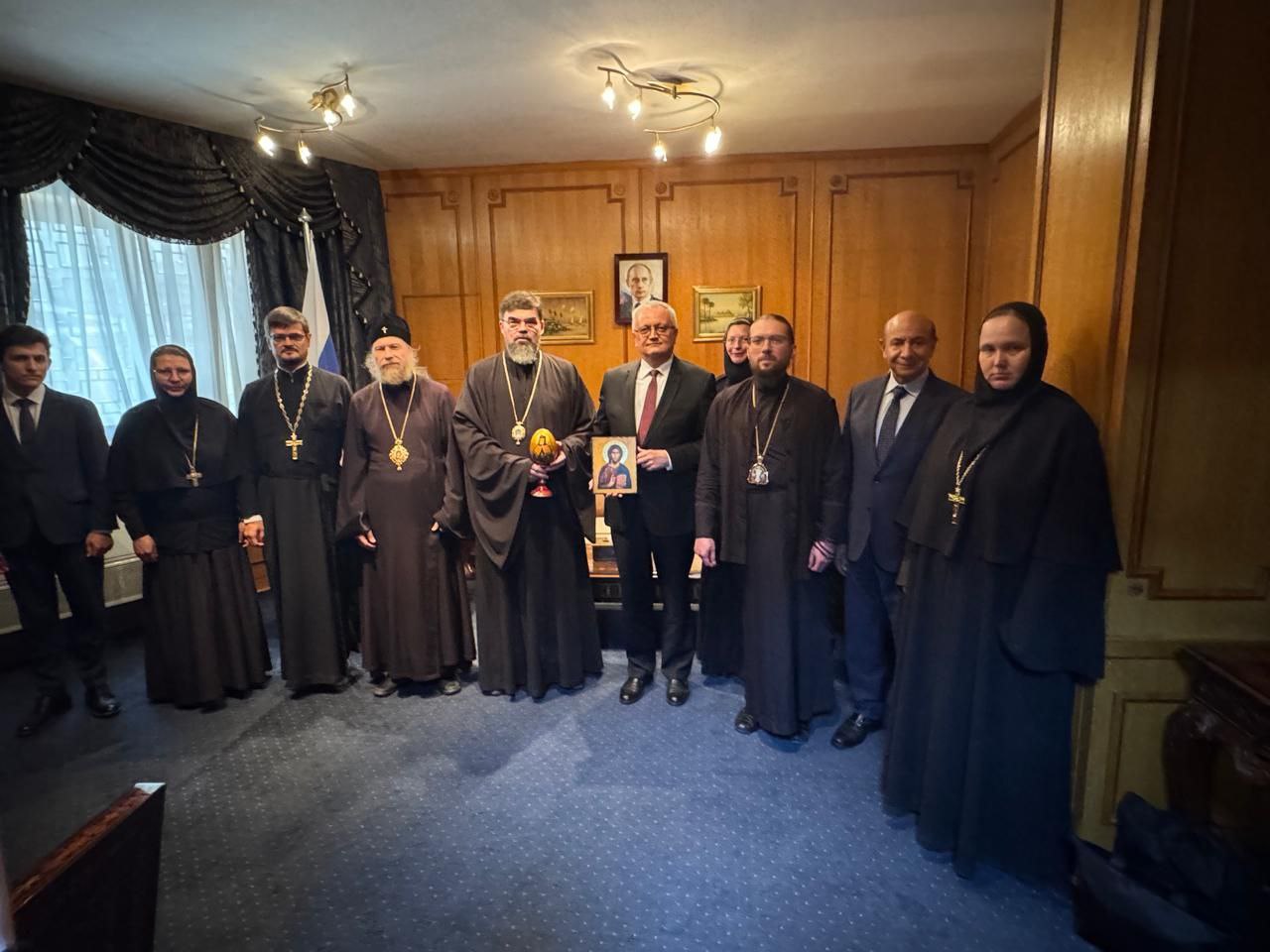
DECR Communication service, 24.05.2025.
Fr om May 11 to 19, with the blessing of His Holiness Patriarch Kirill of Moscow and All Rus' and at the invitation of His Holiness Pope Tawadros II of the Coptic Church, a delegation of monastics fr om the Russian Orthodox Church visited Egypt to make a pilgrimage to sites associated with the history of the origins and flourishing of Christian monasticism, as well as to familiarize themselves with the contemporary life of male and female monasteries of the Coptic Church.
The delegation was led by Metropolitan Mitrofan of Gorlovka and Slavyanosk. It included: Metropolitan Leonty of Voronezh and Liski; Bishop Dionysius of Rossosh and Ostrogozhsk; Hieromonk Stefan (Igumnov), DECR Secretary for Inter-Christian Relations; Hegumen Alexy (Sukachev), abbot of the Dormition Divnogorsk Monastery of the Voronezh Diocese; Hegumen Ilya (Zhdamirov), abbot of the Belogorsk Resurrection Monastery of the Rossosh Diocese; Hegumen Tikhon (Komarov), abbot of the Seraphim-Sarov Monastery of the Borisoglebsk Diocese; Hegumeness Elisaveta (Pozdnyakova), abbess of the Martha and Mary Convent of Mercy in Moscow; Hegumeness Anna (Morozova), abbess of the Dormition St. Nicholas Monastery of the Donetsk Diocese; Hegumeness Mikhaila (Shevchenko), abbess of the Iveron Monastery in Donetsk; Hegumeness Varvara (Sazhneva), abbess of the Alexeevo-Akatov Monastery in Voronezh; Hegumeness Elena (Zolotukhina), abbess of the Spassky Monastery of the Rossosh Diocese; clerics of the Epiphany Cathedral in Gorlovka—Archdeacon Mikhail Ilychuk and Archdeacon Roman Stepin; employees of the Moscow Patriarchate—Nun Arsenia (Yakimenko), Nun Alexandra (Vorobyova), and Novice Alexandra (Zubkova); and DECR employee D.E. Arakelyan. The trip was also attended by the representative of the Coptic Church in Russia, Hieromonk Daoud el-Antony; advisor to the Coptic Pope A. Milad; N.A. Kuskova; and M.A. Motawaj.
Fr om May 11 to 13, the delegation visited the holy sites of the birthplace of Christian monasticism - the Nitrian Desert (Wadi al-Natrun), located between Cairo and Alexandria.
The first stop of the delegation was the Monastery of St. Macarius the Great. This monastery, whose history dates back to 360 and which today has about 120 inhabitants, is the site of the earthly ascetic labors and blessed repose of one of the founders of monasticism, as described in the Egyptian Patrology.
The members of the delegation venerated the holy relics of St. Macarius the Great and another holy elder who later labored here and also bore the angelic name Macarius, as well as the incorrupt remains of St. Paphnutius the Great, St. Poemen the Great, St. John the Baptist, the Prophet Elisha, John Kolobos, and other ascetics, including 51 martyrs who lived in the 5th century - 49 of whom were brethren of the monastery who, together with their abbot, voluntarily chose not to flee fr om the barbarians attacking the monastery and instead accepted death for Christ.
The Russian pilgrims prayed before the icon of the Mother of God "Hodegetria of Smolensk" - an image that was gifted to the monastery at the end of the 19th century by the holy passion-bearer Emperor Nicholas II.
The delegation members had the opportunity to converse with the monastery’s brethren.
Next, the pilgrims visited the Lavra of the Nitrian Desert - the Monastery of St. Pishoy the Great (Anba Bishoy), founded by this saint around 357. The delegation venerated the relics of many ascetics of the ancient Church residing in the monastery, primarily those of St. Pishoy himself, and visited the tomb of His Holiness Pope Shenouda III of the Coptic Church (1971–2012), whose leadership marked an important era in the life of the Coptic Church, including the development of its relations with the Moscow Patriarchate. A fraternal meeting took place between representatives of the Russian Orthodox Church and the abbot of St. Pishoy’s Monastery, Bishop Agathius, and the brethren.
The delegation then visited the Syrian Monastery (Deir al-Surian), founded at the end of the 4th century by disciples of St. Pishoy the Great on the site of his remote cell. It was named in memory of the Syrian monks who lived there for several centuries. The monastery has a strong historical tradition of hermitage. In the 5th–7th centuries, the entire brotherhood was scattered in cells throughout the desert, gathering in the monastery only for Sunday and feast-day services. These traditions are partially preserved in the monastery’s life today: many anchorites labor there, and its rule does not include common meals on weekdays.
The name of St. Ephrem the Syrian is closely associated with this ancient monastery, as he once came here to meet St. Pishoy the Great. On the monastery grounds, one can still see a tree that has borne fruit for over 1,500 years - traditionally believed to have grown fr om the staff of St. Ephrem, which he thrust into the ground, serving as a living witness to the meeting of these two great ascetics of Christian monasticism.
A fraternal meeting was held with the monastery’s inhabitants, who today number over 200.
Later, the delegation visited the Monastery of the Romans (Deir al-Baramus), founded around 335 by St. Macarius the Great and named in memory of the sons of the Roman Emperor Valentinian - Maximus and Domitius - who labored there under this great ascetic at the end of the 4th century.
Metropolitan Mitrofan and the delegation members toured the monastery’s churches and utility buildings, including the 4th-century refectory wh ere the first monks held agape meals after the Liturgy before retreating to their desert cells. The Russian pilgrims venerated the relics of saints who once labored in the monastery - St. Isidore, St. Moses the Black, and other desert fathers - and sang the magnification to St. Arsenius the Great, who also performed his prayerful ascetic labors here. In the far part of the ancient monastery church, a column remains wh ere St. Arsenius stood humbly praying, long unrecognized by the brethren. He later became one of the most renowned ascetics of the Nitrian Desert but was forced to leave this place to escape the fame surrounding his spiritual feats and the people seeking him. He found blessed repose in what is now Cairo, instructing that his body not be given a proper burial. For this reason, no reliable information about the location of his holy relics has been preserved.
On May 13, after leaving the Nitrian Desert, the delegation traveled to the Alexandria Governorate, wh ere they visited two women’s monasteries in the city of Sidi Kerir near the ancient center of universal Christianity - the monasteries of St. George the Victorious and St. Mercurius Philopater.
That same day, the pilgrims arrived at the Mariout Desert near Alexandria. Here, the delegation visited the monastery named after St. Menas of Kotuan, who suffered for Christ in the 3rd century and is glorified by many miracles. Today, it is one of the largest monasteries of the Coptic Church and a pilgrimage site in the Christian East. The Russian guests met with the monastery’s abbot, Bishop Kyrillos, and the brethren, and visited the tomb of His Holiness Pope Kyrillos VI, venerated as a saint by the Coptic Church. The Russian pilgrims also viewed the ruins of the ancient city near the monastery of St. Menas, which bore the name of this saint (Abu Mina), including the site wh ere his holy relics were once discovered.
Fr om May 14 to 16, the representatives of the Russian Orthodox Church were in Cairo.
On May 14, the delegation members visited the Grand Egyptian Museum and the women’s monastery of St. Theodore Stratelates (Amir Tadros). They were warmly received by its abbess, Hegumeness Edrosis, and the sisters. Metropolitan Mitrofan and the delegation venerated the spring of St. Onuphrius the Great on the monastery grounds - traditionally revealed through the prayers of this saint - as well as the myrrh-streaming icon of St. Theodore Stratelates, his holy relics, the relics of St. Onuphrius and St. Marina the Martyr, and other sacred objects kept there for veneration.
On May 15, the delegation visited the holy sites of ancient Christian Cairo. Among them was the famous "Hanging Church" (Al-Muallaqa), built on the ruins of the ancient Roman fortress "Babylon of Egypt" and long serving as the cathedral of the Coptic Popes. The guests visited the Church of Saints Sergius and Bacchus, wh ere they venerated the holy remains of early Christian martyrs. This Cairo church was built in the 4th century over a cave wh ere the Holy Family stayed for three months during their flight to Egypt fr om Herod’s persecution. That same day, the pilgrims visited the Church of St. Barbara, which houses a portion of her relics, as well as relics of Sts. Juliana, Damiana, and other saints, and the Coptic Museum. Additionally, the pilgrims visited the women’s monastery of St. George the Victorious (Mar Girgis), wh ere they met with its abbess, Hegumeness Thekla, and the sisters.
That evening, a meeting took place at the Russian Embassy in Cairo between the delegation members and the Ambassador Extraordinary and Plenipotentiary of the Russian Federation to the Arab Republic of Egypt, G.E. Borisenko. On behalf of the delegation, Metropolitan Mitrofan of Gorlovka and Slavyanosk, Metropolitan Leonty of Voronezh and Liski, and Bishop Dionysius of Rossosh and Ostrogozhsk spoke about the purpose of the visit and their impressions of the holy sites of Egypt. In turn, G.E. Borisenko emphasized the importance of the mission to develop relations between the Moscow Patriarchate and the Coptic Church, which contributes to inter-Christian and interreligious dialogue and strengthens the traditionally friendly ties between the peoples of Russia and Egypt.
That evening, a meeting was held at the Russian parish of St. Sergius of Radonezh in Cairo between the delegation and Bishop Euthymy of Lukhovitsy, vicar of the Patriarchal Exarchate of Africa.
On May 16, the Russian pilgrims visited the Coptic Cathedral of St. Mark the Apostle, where they venerated his relics and those of St. Athanasius of Alexandria, as well as the Cathedral of Saints Peter and Paul, honoring the memory of the New Martyrs of the Coptic Church who suffered there in 2016 and are now glorified as saints.
The pilgrims also stopped at the medieval women’s monastery of St. Mercurius Philopater (Abu Sefein), where they met with the abbess and sisters.
Fr om May 16 to 18, the delegation visited the monasteries of St. Anthony the Great and St. Paul of Thebes in the Eastern (Arabian) Desert between the Nile Valley and the Red Sea coast.
The first stop in the Eastern Desert was the dependency of the Monastery of St. Paul of Thebes, located near the main monastery. Here, the representatives of the Moscow Patriarchate were warmly received by the abbot of St. Paul’s Monastery, Metropolitan Daniel, chairman of the Coptic Church’s Patriarchal Commission for Monasteries and Monasticism, who had previously visited Russia multiple times as head of Coptic monastic delegations. During an extended fraternal meeting, many topics of mutual interest were discussed.
The delegation then arrived at the Monastery of St. Anthony the Great—founded in the early 4th century near the mountain wh ere the father of Christian monasticism labored in a cave cell. A tour of the monastery was arranged for the pilgrims, who saw its churches and historical landmarks, as well as the spring of St. Anthony, which originates at an altitude of over 400 meters and provides the monastery with 80 to 100 cubic meters of water daily.
On May 18, the delegation visited the Monastery of St. Paul of Thebes. In the church of St. Paul, the guests venerated the saint’s tomb, located at the very spot where lions miraculously appeared fr om the desert to dig the elder’s grave. The pilgrims learned about the monastery’s history and its holy sites and saw the spring of St. Paul, which flows from a height of about 300 meters and provides the brethren with around four cubic meters of water daily.
That same day, the delegation members celebrated the Divine Liturgy in the monastery’s church of St. Mark the Ascetic, built in the cave wh ere this saint’s cell was located over 1,500 years ago.
On May 19, the pilgrims visited the Coptic Cathedral of the Nativity of Christ in New Cairo - the largest Christian temple complex in the Middle East, solemnly opened and consecrated on January 6, 2019, in the presence of Egyptian President A. al-Sisi.
That same day, the delegation departed for Russia.
